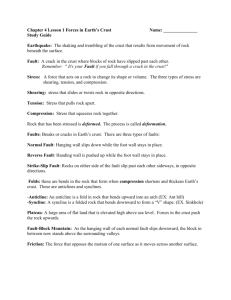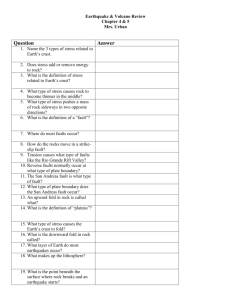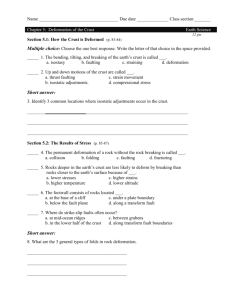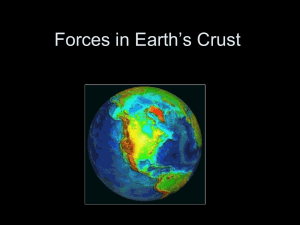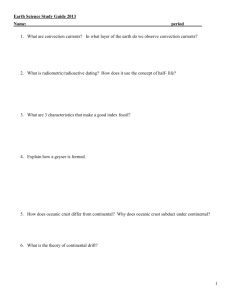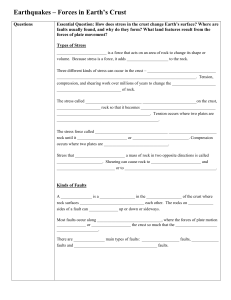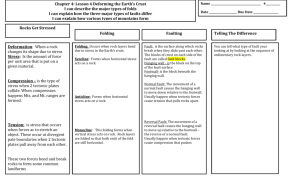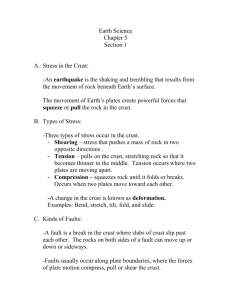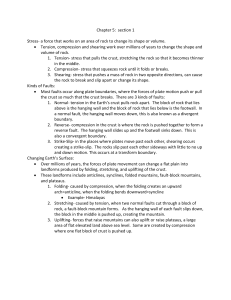Earth`s Crust in Motion - Epiphany Catholic School
advertisement
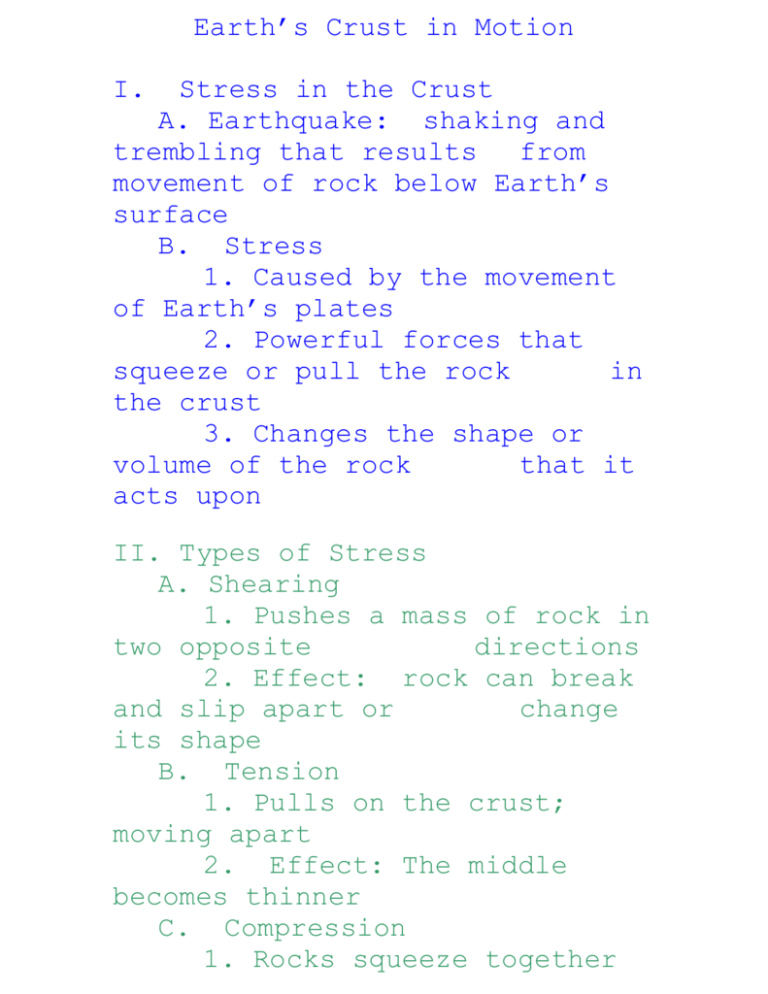
Earth’s Crust in Motion I. Stress in the Crust A. Earthquake: shaking and trembling that results from movement of rock below Earth’s surface B. Stress 1. Caused by the movement of Earth’s plates 2. Powerful forces that squeeze or pull the rock in the crust 3. Changes the shape or volume of the rock that it acts upon II. Types of Stress A. Shearing 1. Pushes a mass of rock in two opposite directions 2. Effect: rock can break and slip apart or change its shape B. Tension 1. Pulls on the crust; moving apart 2. Effect: The middle becomes thinner C. Compression 1. Rocks squeeze together 2. Effect: Crust breaks or folds D. Shearing, tension, and compression work over millions of years to change the shape and volume of rock. E. Deformation 1. any change in the crust 2. Examples a. bend b. break c. tilt d. fold e. stretch III. Kinds of Faults A. Fault: caused when enough stress builds up in rock and the rock breaks B. A break in the Earth’s crust where slabs of crust slip past each other C. Usually occur along plate boundaries, where the forces of plate motion compress, pull, or shear the crust so much that the crust breaks D. Strike-Slip Faults 1. Created when the rocks on each side of the fault slide past each other, with little up-ordown motion. 2. Forms at transform boundaries 3. San Andreas fault in California is an example of strike-slip fault that is a transform boundary E. Normal Faults 1. Fault is at an angle, one block of rock lies above the fault, while the other lies below the fault a. HANGING WALL- half that lies ABOVE the fault b. FOOT WALL- half that lies BELOW the fault 2. When movement occurs, the hanging wall slips downward 3. Forms at divergent boundaries 4. Rio Grande Rift Valley is an example of a normal fault that is occurring at a divergent boundary F. Reverse Fault 1. Fault is at an angle, same as a normal fault. 2. When movement occurs, the hanging wall slips upward 3. Form at convergent boundaries 4. The majestic peaks in Glacier national Park are an example of a reverse fault occurring at a convergent boundary. IV. Friction Along Faults A. Force that opposes the motion of one surface as it moves across another surface. 1. When friction is lowrocks slide by each other without much sticking 2. When friction is moderatesides of the fault jam together (from time to time they jerk free producing small earthquakes) 3. When friction is high- the rocks lock together and do not move (stress increases until an earthquake releases the stress) V. Mountain Building A. Over millions of years, fault movement can change a flat plain into a towering mountain range. B. Mountains Formed by Faulting 1. Fault-block mountain forms when normal faults uplift a block of rock. 2. When two normal faults form parallel to each other, and a block of rock is left lying in the middle. 3. When the hanging wall of each normal fault moves downward, the block in between moves upward. C. Mountains Formed by Folding 1. Folds are bends in rocks that form when compression shortens or thickens part of Earth’s crust 2. When two plates collide, compression causes Earth’s crust to fold. 3. Himalayas in Asia are an example of fold mountains. 4. These plate collisions can also cause earthquakes, because folding rock can crack and produce cracks. D. Anticlines and Synclines 1. Describe the upward and downward folds in rock. a. anticline- upward b. syncline- downward 2. Found where compression forces have folded the crust. 3. May see a syncline where a valley dips between two hills. E. Plateaus 1. Large area of flat land elevated high above sea level. 2. Form when vertical faults push up a large flat block of rock. 3. Consists of many different flat layers.
